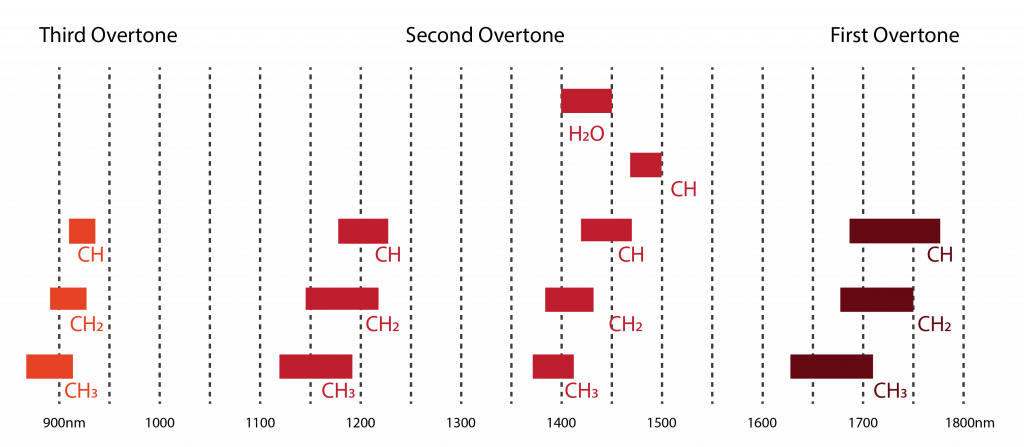The working principle of the Plastic Scanner is Near Infrared Spectroscopy. The way how the Plastic Scanner can identify different types of plastic is through near infrared spectroscopy. Near infrared spectroscopy has been a tried and tested method for identifying materials for years. It is used in applications like pharmaceuticals, food science, and plastic recycling!

So what is spectroscopy? Spectroscopy is the study of the interaction between matter and electromagnetic radiation. Sounds fancy, but the most familiar (and excellent) spectroscope is your eye. it can measure everything on the spectrum from 380nm (purple) to 750nm (red).
For anything above the wavelength of 750nm, our eyes are not sensitive, so if we look at the LED from our TV remote, we do not see light being emitted from that. This also brings us to Near Infrared.

What is Near InfraRed? Near InfraRed (or NIR for short) is a section of the electromagnetic spectrum next to the visual spectrum, basically beyond red, so ranging from 750nm to 2500nm.
If we want a computer to help us do spectroscopy we need to find something that is sensitive to the light we want to observe. For visual light, this is silicon (for example cameras, solar panels, and brightness sensors). For Infrared light, this is InGaAs, and this is what we use for the Plastic Scanner!
How does material identification work with NIR
Different materials react differently to infrared light. Specific infrared light can cause a molecule set to change the bond length (called (a)symmetrical stretching) or the bond angle (called bending). Based on the overtones that the molecules produce you can see absorption in different parts of the infrared spectrum. since different plastics are made from different molecules, there will be different absorption of infrared light, making it possible it identify different materials.
Here is an image of overtones

Read more about NIR spectroscopy
An Introduction to near Infrared Spectroscopy
Existing handheld NIR spectroscopes
Article: Hand-held near-infrared spectrometers: State-of-the-art instrumentation and practical applications
Article: Handheld near-infrared spectrometers: Where are we heading?
Article: Handheld NIR Spectral Sensor Module Based on a Fully-Integrated Detector Array
Personal overview: Notion page
Details for plastics waste sorting
Paper: Miniaturized Near-Infrared (MicroNIR) Spectrometer in Plastic Waste Sorting
Paper: Identification and classification of plastic resins using near infrared reflectance spectroscopy
Plastics filled with carbon black absorb all the light, also infrared light, so identifying them is a no go.
Implications of discrete NIR
like an RGB sensor

Paper by Armin: Identification of Plastic Types Using Discrete Near Infrared Reflectance Spectroscopy
For developers
Optical design considerations by Texas Instruments
Performance Optimizations by Texas Instruments for NIR spectrometer
In-depth about NIR spectroscopy
Video by Heinrich Grüger – MEMS based systems and their applications in NIR spectroscopy for materials analysis
Informational videos
https://www.ti.com/tool/TIDA-00554#support-training
https://www.ti.com/dlp-chip/spectroscopy-optical-networking/overview.html
